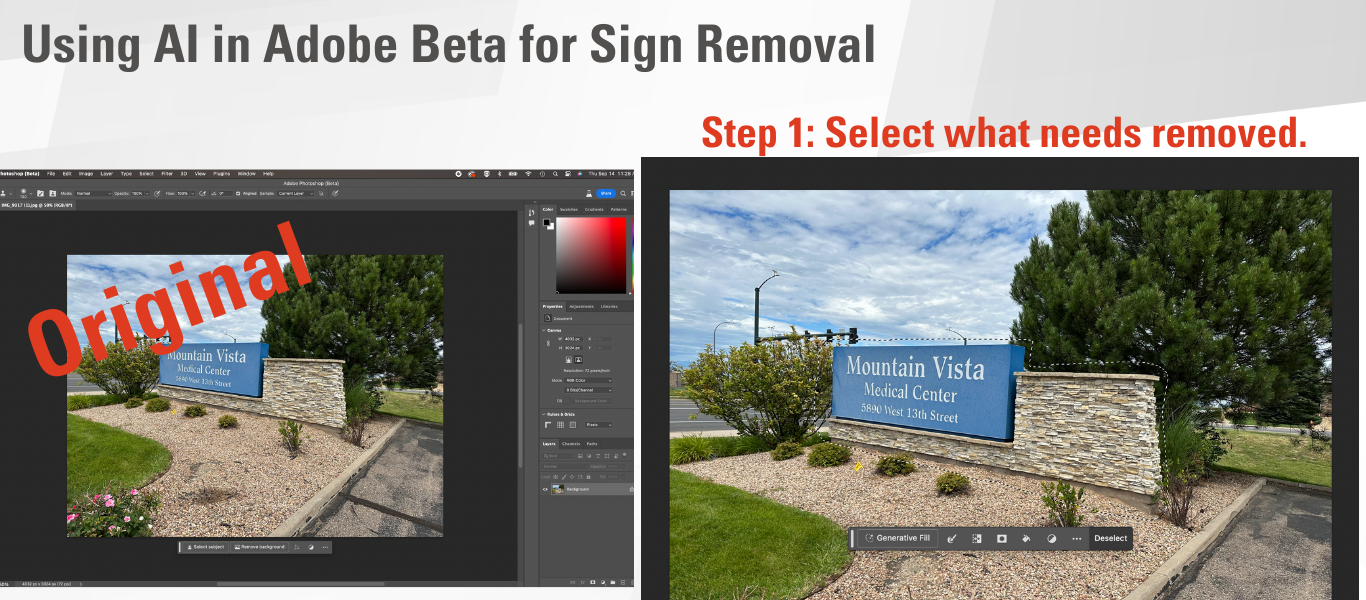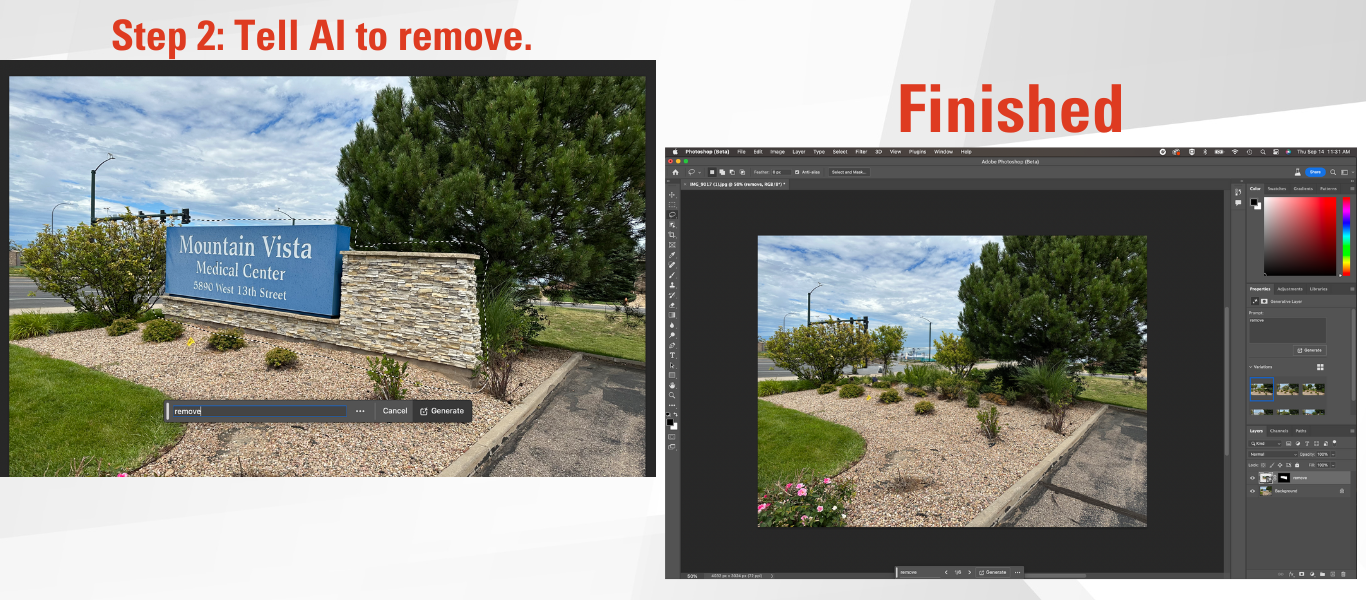
With Artificial Intelligence (AI) and the powerful creative tools provided by Adobe, the architectural signage industry is poised for a revolutionary transformation.
1. Personalization: AI can analyze user data to create personalized signage experiences. For instance, a shopping mall can use AI to display tailored advertisements and wayfinding information based on a visitor’s preferences and past behavior.
2. Data-Driven Design: AI can process vast amounts of data to inform design decisions. By analyzing foot traffic patterns and user behavior, architects can optimize the placement and design of signage for maximum impact and usability.
3. Design Assistance: AI-powered design assistants can suggest color schemes, typography, and layout options based on current design trends and user preferences, making the creative process more efficient.
1. Adobe Sensei: Adobe’s AI platform, Sensei, offers advanced features like image recognition, content-aware fill, and automatic font matching. These tools can significantly speed up the design process and improve design quality.
2. Augmented Reality (AR): Adobe Aero, an AR authoring tool, can be used to create interactive, immersive signage experiences. AI can enhance the AR content by providing real-time data and customization options.
3. Creative Collaboration: Adobe Creative Cloud’s cloud-based nature facilitates seamless collaboration among architects, designers, and clients, making it easier to share and iterate on signage designs.
1. Automation: Repetitive tasks such as resizing images, adjusting color profiles, and converting file formats can be automated using AI, allowing designers to focus on more creative aspects.
2. Rapid Prototyping: AI-powered tools can generate quick prototypes, enabling designers to test and refine their ideas faster, reducing time-to-market for signage projects.
3. Error Reduction: AI can detect and flag design errors, such as inconsistent fonts or misaligned elements, before the signage is manufactured, saving both time and resources.
As the world is constantly learning more and more about AI and its benefits, so are we here at ImageFirst Signs. Our team is working hard to continue to learn about AI, use the technology, and expand our capabilities and processes with this innovative tool.
Nick Nelson, Project Manager & Designer“We use the new Adobe Photoshop Beta to save time with photo renderings. With a simple text prompt, it can remove an existing sign from a photo, which saves a tremendous amount of time and effort. This allows us to show what a customer’s new sign would look like in the same location.”


As we move forward, it’s clear that AI and Adobe will continue to play a pivotal role in shaping the future of architectural signage, pushing the boundaries of design and innovation in this field.